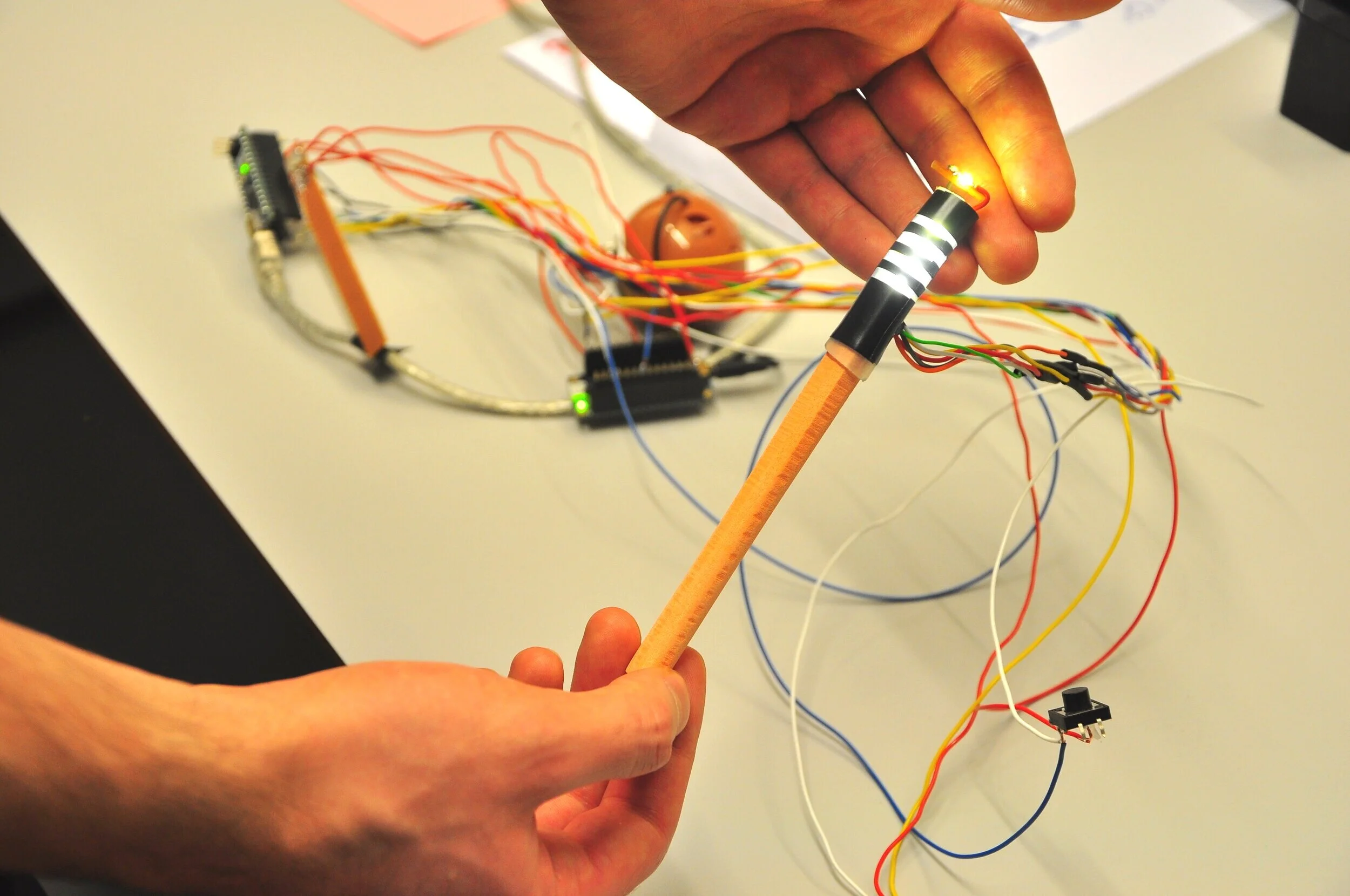Isa
An intuitive Epinephrine auto-injector for patients with a severe allergy. Device guides users with sound and light.
Context
Umeå Institute of Design, Group Project • 2 weeks • 2016
Sound & interaction design for physical product
Role
Concept ideation, sound & light design, user research in cooperation with Jenny Holmsten, Piotr Kuklo and Yue Yuan.
Background
The scale of the problem
0.05–2% of the population is estimated to experience anaphylaxis (life-threatening allergic reaction) at some point - it's 73 000 000 people.
84% of patients use auto-injectors incorrectly
One of the most common errors is the failure to hold the unit in place for at least 10 seconds after triggering.
Interviews • sound & light studies
“Existing solutions are difficult to use and terrifying”
Interviews
Understanding experience of living with allergies • 3 participants
Interviews undercovered challenges patients living with allergies are facing: the intimidating look of the injector, overwhelming instructions, lack of awareness of how long the injection should last, need to carry two injectors, and the troublesome process of renewing prescription every year.
“Silence is also an indicator, you don’t need to communicate every change with a sound”
Initial walkthrough
Meaning of sound and light • 4 participants
In the initial research, we explored the possibilities of light and sound guiding users through the process. We also asked users to do card sorting indicating how certain sounds make them feel.
“This sound somehow made me keep injector on my leg, even though [initially] I didn't know how long I'm supposed to do it.”
Wizard of Oz
Type of feedback | 4 participants
During the Wizard of Oz study, we tested if our solution is understandable without detailed instruction. All of the users who haven't used auto-injectors before performed tasks correctly.
Challenges & Opportunities
The intimidating look of auto-injectors
Auto-injectors look overly complicated and attract a lot of attention if accidentally seen by others. Additionally, there is no system in place to make it easier to find an auto-injector in case of an emergency.
Information overload & lack of feedback
Existing solutions don't provide clear instruction and it's usually only visual information. at the same time, users don't get any direct feedback on the most important point - time injection should last.
Isa concept
In an emergency, it is essential to quickly find the injector. Sound guiding to the device can be triggered by the mobile app or by shaking the bag or backpack it is in.
The device is ready to use after removing the cap and loading - the user gets clear feedback when to start.
To prevent too short injection time that is number one use error injector is counting down the injection time - 10 seconds.
Magnetic attachment
Since the user needs to carry two auto-injectors they can be connected thanks to magnets embedded in the main body of the device.
Reusable
While other solutions on the market are disposable in the case of Isa only part of the needle and medicine needs to be replaced after using it.
Step-by-step instruction
Easy visual instruction doesn't overload the user with unnecessary information.
Color coding
Part of the needle is marked with an alerting shade of orange.
Icons by @craftworkdesign









